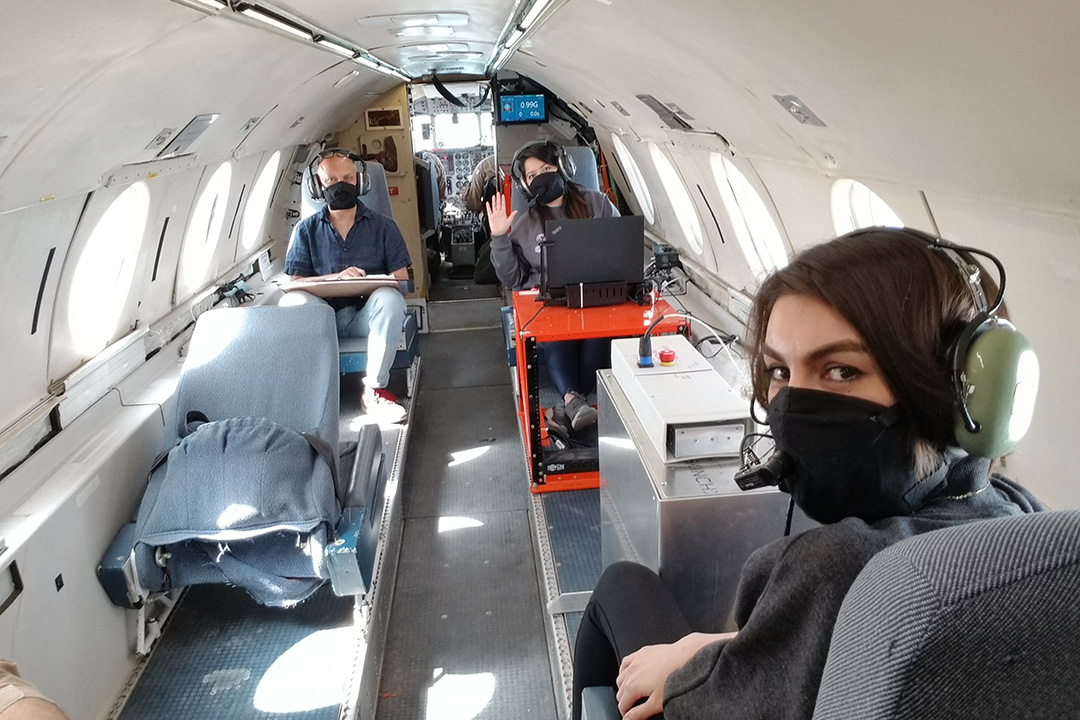
Sarty’s USask team tests technology for MRI in space
Thirty thousand feet at a time, Dr. Gordon Sarty (PhD) is closing in on his dream of putting magnetic resonance imaging (MRI) technology into space.
By James ShewagaSarty, the head of the Department of Psychology and interim chair of biomedical engineering at the University of Saskatchewan (USask), recently returned from Ottawa after completing the final round of in-flight testing of a unique lightweight ankle-sized MRI designed to monitor the health of astronauts on future space missions. Working with the Canadian Space Agency (CSA), Sarty’s research team successfully tested the MRI technology on April 26-27 aboard a National Research Council jet that soared above 30,000 feet for a series of steep climbs and dives designed to simulate the zero-gravity conditions of space flight.
“It creates an environment that is similar to space flight, and that moves you up that technology readiness level ladder,” said Sarty. “We demonstrated maybe 80 per cent of the hardware for a space flight MRI on the jet, so the big thing that we proved here is that our hardware is robust. We did not have any failures at all, nothing broke, and the software worked as expected. We achieved what we set out to achieve, so that was good.”
USask graduate students Faezeh Ebadollahi, Hammed Ejalonibu, Pallavi Bohidar and Farnaz Zohourparvaz from Sarty’s Space MRI lab research group joined him on the test flights.
“We had to take precautions because of COVID, so that was a bit of a challenge,” said Sarty, who flew his own Cessna aircraft to Ottawa for the tests. “We all had to wear masks and we were not allowed to float around the cabin as much as you normally would.”

Sarty plans to present his research and proposal for a wrist-sized MRI on the next lunar mission—a project Canada has committed $150-million to through the new Lunar Exploration Accelerator Program (LEAP)—at upcoming conferences hosted by the space agency. In the meantime, Sarty’s team is back in the lab working to improve the imaging from their MRI.
“We have to add components to improve the images from the MRI that we get and we are working on that continuously,” said Sarty, whose research is supported by grants from the CSA and Natural Sciences and Engineering Research Council of Canada. “We discovered things that were unexpected, so we have to figure out what nature is telling us. We are also working on four other different MRI prototypes in various stages of development, and they all use different approaches to get an image.”
Ultimately, Sarty’s team is hoping to test their novel MRI technology aboard the International Space Station, the next step in a journey they hope will ultimately take their project to the Moon and, eventually, Mars.
“We have been trying to get to the space station and we have been working with the space agency for a number of years on that, so these are really steps along that path,” said Sarty. “The objective with this project is to get MRI into space, and that means to the Moon and Mars.”
With the latest signs of success, Sarty is confident his research team’s approach will work to put an MRI in space.
“It’s just a matter of time and money.”

